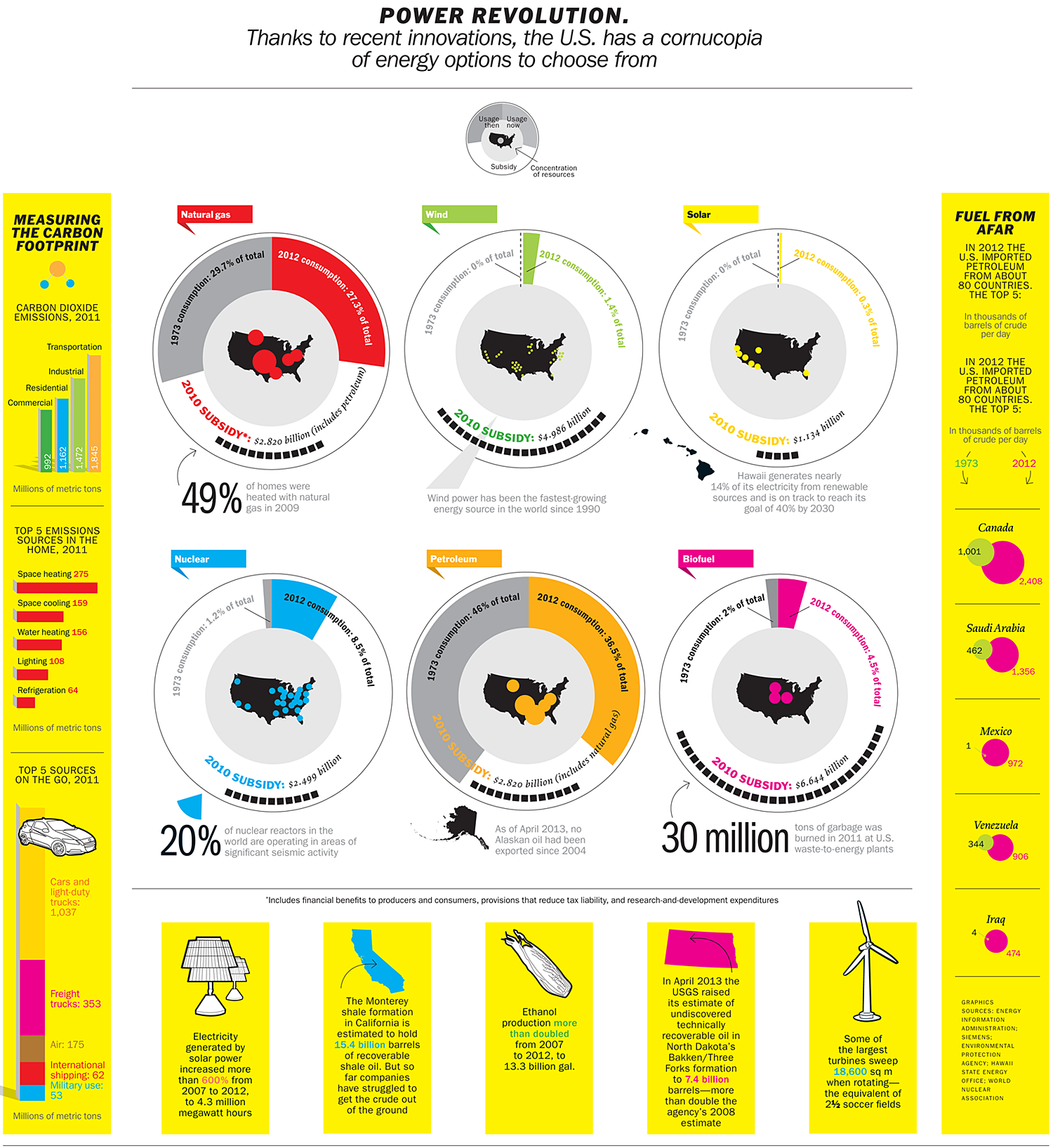I have a longformish piece in this week’s magazine about the energy revolution that’s unfolding across America—its benefits, and its challenges. Please allow myself to quote myself:
Forty years after the 1973 Middle East oil embargo ushered in an era of energy scarcity, the U.S. is in the midst of a power revolution, driven largely by new technology. Hydraulic fracturing and horizontal drilling have allowed energy companies to unlock vast new supplies of oil and natural gas. Wind and solar have gone from green dreams to economic realities, while utilities are remaking the rickety power grid into something smarter and far less wasteful. Within a decade North America as a whole could produce as much oil as it consumes, reducing the influence of the Middle East. “The transformation we’ve seen in just the last few years from an outlook of scarcity to one of abundance is real,” says Jason Bordoff, director of Columbia University’s Center on Global Energy Policy. “It has huge economic, geopolitical and environmental implications.”
The benefits are abundant. By displacing dirtier coal, cheap natural gas has helped reduce U.S. greenhouse-gas emissions even as it has boosted U.S. manufacturers that rely on gas as a feedstock. Falling oil imports means that billions of dollars that once went abroad are now staying in the U.S., providing capital for other investments. But energy abundance comes with its own set of challenges. There’s already been an environmental backlash against the fevered exploitation of unconventional oil and gas. Nor is there any guarantee that the recent oil boom–which is dependent on high prices–will continue into the future.
Success could be even scarier: if new technologies can ensure that fossil fuels remain relatively cheap for decades ahead, it will be that much more difficult to wean the world off carbon in time to avert dangerous climate change. Global carbon emissions hit an all-time high last year, and the International Energy Agency reported in June that the world was on a path toward temperature increases that could be as high as 9.5°F by the end of the century. “People can no longer rely on high oil prices and fossil-fuel scarcity to motivate a climate agenda,” says Amy Myers Jaffe, executive director of energy and sustainability at the University of California at Davis. “It completely changes the picture.” The American energy revolution is real–but it may be too much of a good thing.
Subscribers can read the whole thing here.
The story goes into greater detail about how the fracking revolution has reversed what seemed like the terminal decline in U.S. oil production and extended the life of fossil fuels—a change that has gotten a lot of attention, especially as we near the 40th anniversary of the 1973 oil embargo on October 16. But the boom isn’t just in shale oil and shale gas—renewables like solar and wind have kept growing. And the most important if least noticed progress is being made in energy efficiency, where thanks to technology and government regulation, the U.S. is getting twice as much economic value out of a unit of energy than it did in 1980. We’re even using less oil now than we did in 1972, when the American economy was a third its current size. Even the much-maligned electrical grid is being remade. “The rate of change that’s being driven in this field by new technology is dramatic,” says Hal Harvey, CEO of the think tank Energy Innovation. “This is an industry that’s in the midst of a major disruption.” So it is for nearly every part of the American energy system.
So check out the story, as well as the video explainer I taped to go along with it.



